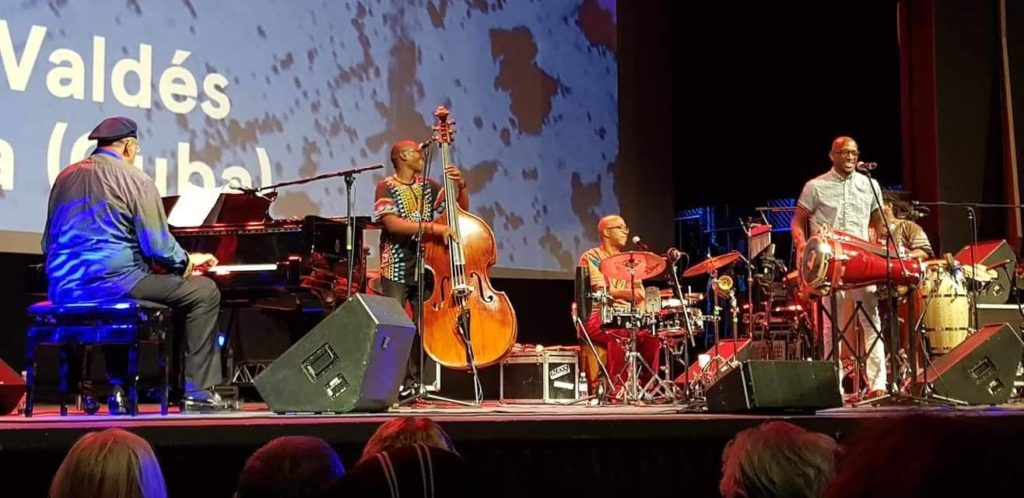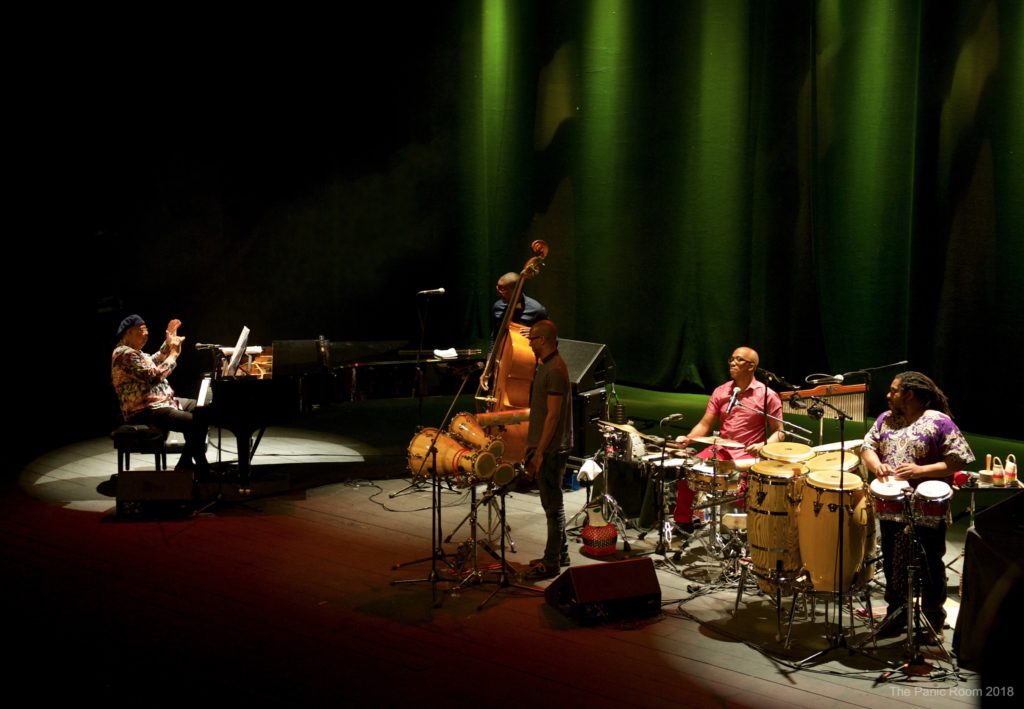"Abraham aux percussions, formidable! J'ai passé un grand moment au concert à l'écouter."
Alex Dutilh, Open Jazz, octobre 2019
Mansfarroll · Dizzy el Afrocubano · Hommage à Dizzy Gillespie
RAUL DA GAMA MAR 17, 2021
Celebrating Dizzy Gillespie – the legendary trumpeter and creative twin of the great [and equally-legendary] Charlie Parker – is not uncommon, especially among Cuban musicians, who value his recognition and support for Afro-Cuban culture as something seminal and which began with his collaboration with the incomparable Cuban rumbero, Luciano “Chano” Pozo. However, most listeners are generally exposed to a sort of [residual] colonial “mythology” that comes from how the world outside Cuba sees that great country – with the city of Havana as its “cultural ambassador”. The reality is not simply different, but incredibly diverse and stretches from Pinar del Río to Guantánamo and everything else in between, which includes Matanzas, La Habana, Camagüey, Holguín, Santiago de Cuba and eight other regions in the tiny Caribbean island nation.
Mansfarroll · Dizzy el Afrocubano · Hommage à Dizzy Gillespie
Why the understanding of this is important is as important as understanding the difference between the reality of “Afro-Cuban” music and its faux-doppelgänger, which is rather deprecatingly called “salsa”. The percussion colourist Abraham Mansfarroll Rodriguez, like many Cuban musicians is one of the musicians who brings the richness and diversity in Cuban music to the fore in his deeply reverential homage to Dizzy Gillespie entitled Dizzy el Afrocubano – Hommage à Dizzy Gillespie. The musical tribute to Dizzy also raises the flag of Changüí, a lyrical-rhythmic musical idiom from the region of Guantánamo, which is where Mansfarroll – as he is popularly known – comes from. It is also a musical idiom which melds the Spanish canción with the West African and sub-Saharan rhythmic idioms such as kiribá and nengón.
Mansfarroll’s genius for invention reaches a musical summit of sorts on “Llegando a Bahía [Dizzy el Afrocubano – Hommage à Dizzy Gillespie]” the title track of this remarkable album. It is here that the African and Spanish collide with the Guantánamo [or “Cubanísmo”] nature of the percussionist. It is here that he pays homage to Dizzy – wielding his lyrical and rhythmic power in a song that combines uncommon melodicism with rhythmic supremacy. This was, after all, at the crux of the great collaboration between Dizzy Gillespie and Chano Pozo in “Manteca”; in the rumbling tumbao that morphed into Jazz bursting with the immortal, dancing harmonic inflections of tumba-Francesa that Dizzy and Chano Pozo captured like a proverbial genie in a bottle.
That Mansfarroll has been able to sustain his creativity over eleven songs – especially the remarkable ones composed by him – all of which grow out of the changüí of his beloved Guantánamo, Cuba, is cause for great celebrations and all the accolades that are due to music of considerable significance. That Mansfarroll was able to do this while living outside his home-country of Cuba is an added bonus, going further in making this repertoire worthy of much more than merely words of praise. Of course, the percussionist is not alone in making this possible. This is, after all, a tribute to one of the greatest Jazz trumpeters of all time. Happily, Mansfarroll was inspired in his choice of musicians to accompany him on this journey.
The two lead melodic and improvisatory voices were handed to Carlos Sarduy and Mario “El Indio” Morejón, and they do an admirable job in making this music burn blue, which is to say that it burns in the hottest part of the flame. You only have to melt in the heat of “Tin Tin Deo” and – more so – in the mystical and crepuscular “Night in Tunisia” – both now associated with the legend that is Dizzy. But make no mistake, the two trumpeters are not alone in bringing something special to this repertoire. There is also the wondrous playing of Irving Acao Sierra, another Cuban expatriate who resides in Europe. The French-Cuba collaboration has enabled Mansfarroll to rope in other musicians of considerable ability and repute – trombonists Denis Cuni and Martin Berlugue, for instance, and pianists Laurent Coulondre and Dimitris Sevdalis as well, who bring superb musicianship with them.
The wall of rhythm is granite-strong and this has everything to do with the masterful musicianship of percussionists Inor Sotolongo Zapata, Sebastián Quezada and Pedro Barrios, all of whom help create this gigantic rhythmic edifice; which leaves the proverbial best for last, and this goes to Felipe Cabrera Cárdenas, a towering contrabassist who anchors everything in the density and rumbling of his musicianship, with Luis Manresa and Rafael Paseiro, who share in the bass line credits of this monumental album.
Track list – 1: Tin Tin Deo; 2: Algo Bueno; 3: Con Alma; 4: Llegando a Bahía [Dizzy el Afrocubano Hommage à Dizzy Gillespie]; 5: Babul; 6: Danzón Dizzy; 7: Dizzy Rumba; 9: Night in Tunisia; 10: Manteca; 11: Díselo Diz
Musiciens – Carlos Miguel Hernández: voice [3]; Mario “El Indio” Morejón: trumpet [1 – 3, 10]; Carlos Sarduy: trumpet [4 – 9, 11]; Denis Cuni: trombone 1 – 8, 10, 11]; Martin Berlugue: trombone [9]; Irving Acao Sierra: saxophones [1 – 8, 10, 11]; Dimitris Sevdalis: piano [1 – 3, 5 – 11]; Laurent Coulondre: piano [4]; Felipe Cabrera Cárdenas: contrabasse [1 – 3, 5 – 7, 10]; Luis Manresa: bass [4, 8]; Rafael Paseiro: bass [9]; Abraham Mansfarroll Rodriguez: percussion; Inor Sotolongo Zapata: percussion; Sebastian Quezada: [percussion 1 – 3, 10]; Pedro Barrios: [percussion [4 – 8, 11]
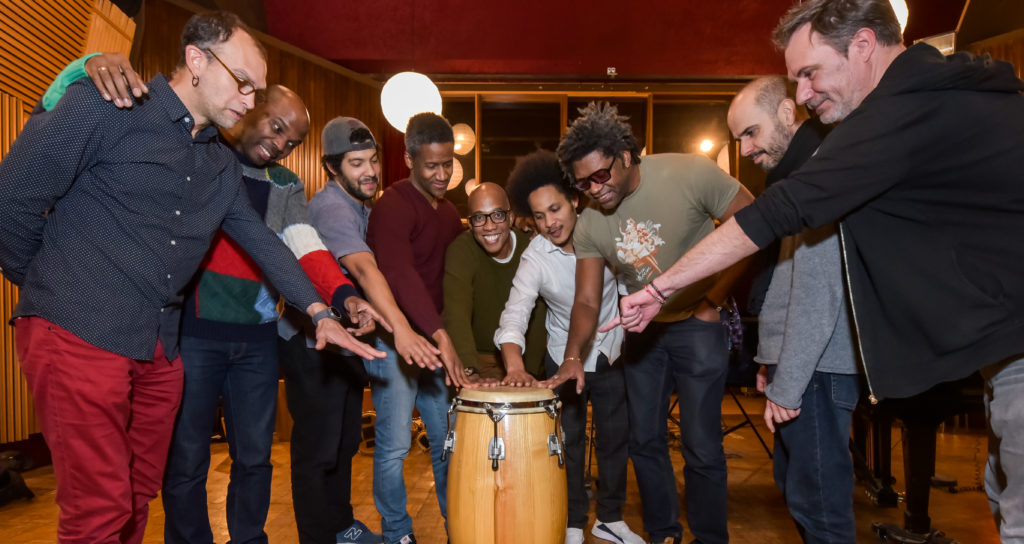
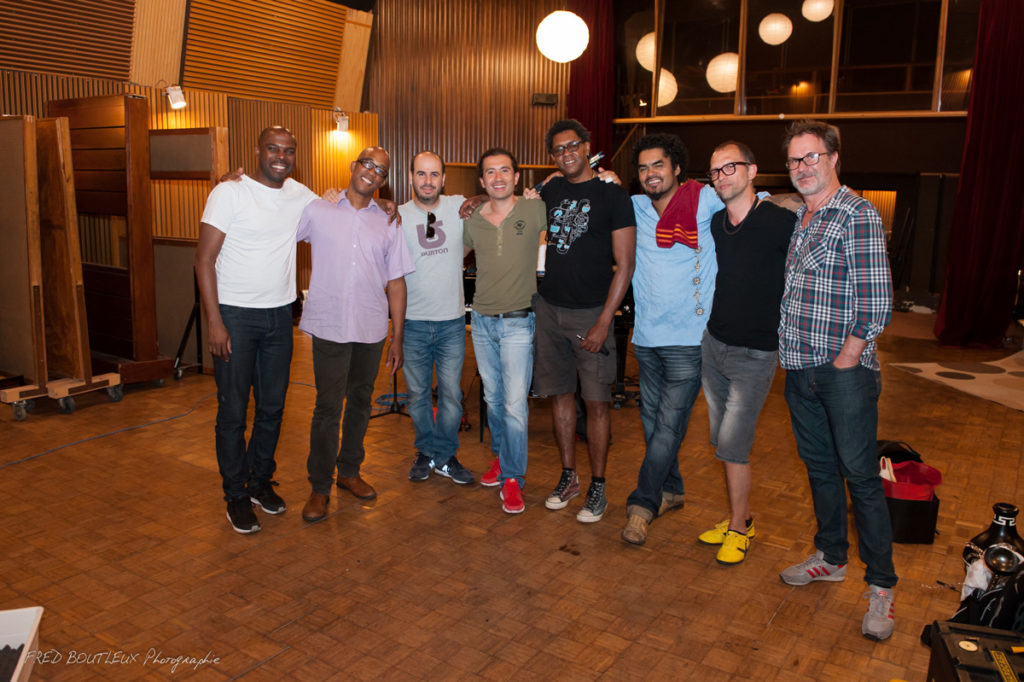
Inicio / De Buena Tinta / CUBADISCO 2021: ABRAHAM MANSFARROLL con Dizzy El Afrocubano
NOTICIAS
CUBADISCO 2021: ABRAHAM MANSFARROLL con Dizzy El Afrocubano
 Por: jds
Por: jdsFecha: 2020.12.21
Fuente: A.MansfarrollHasta finales de este diciembre estará abierta la inscripción para los interesados en participar en Cubadisco 2021, Feria Internacional que este añ tuvo que ser cancelada por la expansión pandeémica de la covid-19. Uno de los que acaba de incorporarse es el nuevo disco del percusionista guantanamero Abraham Mansfarroll, Dizzy El Afrocubano, un homenaje al genial trompetista.
El músico cubano, radicado en París y ya nominado en una reciente edición de Cubadisco, narra a nuestro pedido el origen y otros detalles sobre su más reciente fonograma.
« Los propósitos del disco es un homenaje a Dizzy Gillespie. La idea inicial era realizarlo con varios trompetas cubanos y contacté a Molote, que estaba en París en ese momento con Chucho de gira, y luego lo hice con Julito Padron, pero las agendas ni el momento permitieron hacer las sesiones con ellos. Así fue que sólo con Carlos Sarduy y Mario El Indio Hernandez comenzó la aventura de Dizzy El afrocubano.
Me informé y leí su autibiografía To Be or not to Bop, y conocí el amor que sentía Dizzy hacia la cultura Afrocubana y los músicos cubanos que siempre defendió y ayudó. Conversando con Chucho me explicó que él fue quien llevó las matrices del disco Misa Negra al sello
discográfico Columbia, que luego hizo historia en los Grammy Awards. Además, muchos temas que escribió llevan el nombre en español como Con Alma , Algo Bueno etc.
Este disco lo pensé como un viaje: comenzó en Tíunez y siguió por el Congo, Burkina Fasso, Camerún, pasando por el Caribe Haiti, Guadalupe, Guantánamo y el viaje termina en Pinar del Río con el ritmo Yuka (desarrollado la diversidad ritmica tanto en Africa en el Caribe o en
Cuba ( Tumba francesa, changui, rumba etc)
Tuve gran suerte por tener excelentes músicos que me acompañaron en este viaje:
Contrabajo: Felipe Cabrera Cardenas
Bajo: Rafael Paseiro, Luis Mansresa
Saxofones : Irving Acao Sierra
Trompetas: Carlos Sarduy y Mario « El Indio » Morejon
Trombon: Denis Cuni Rodriguez y Martin Berlugue
Piano: Dimitris Sevdalis y Laurent Coulondre
Percusión: Inor Sotolongo Zapata ,Sebastian Quezada ,Joel Hierrezuelo y Pedro Barrios
Grabado en el Studio Midi Live à Paris 2020.
Ingéniero de Sonido: Fred Magnier
Mezcla: Fred Magnier et Abraham Mansfarroll Rodriguez.
Fotos: Fred Boutleux
Mastering: Raphël Jonin
Ilustración de la carátula : Rodin Sotolongo
EL lien del video del single que salió en Spotify el 4 de diciembre
Llegando à Bahía
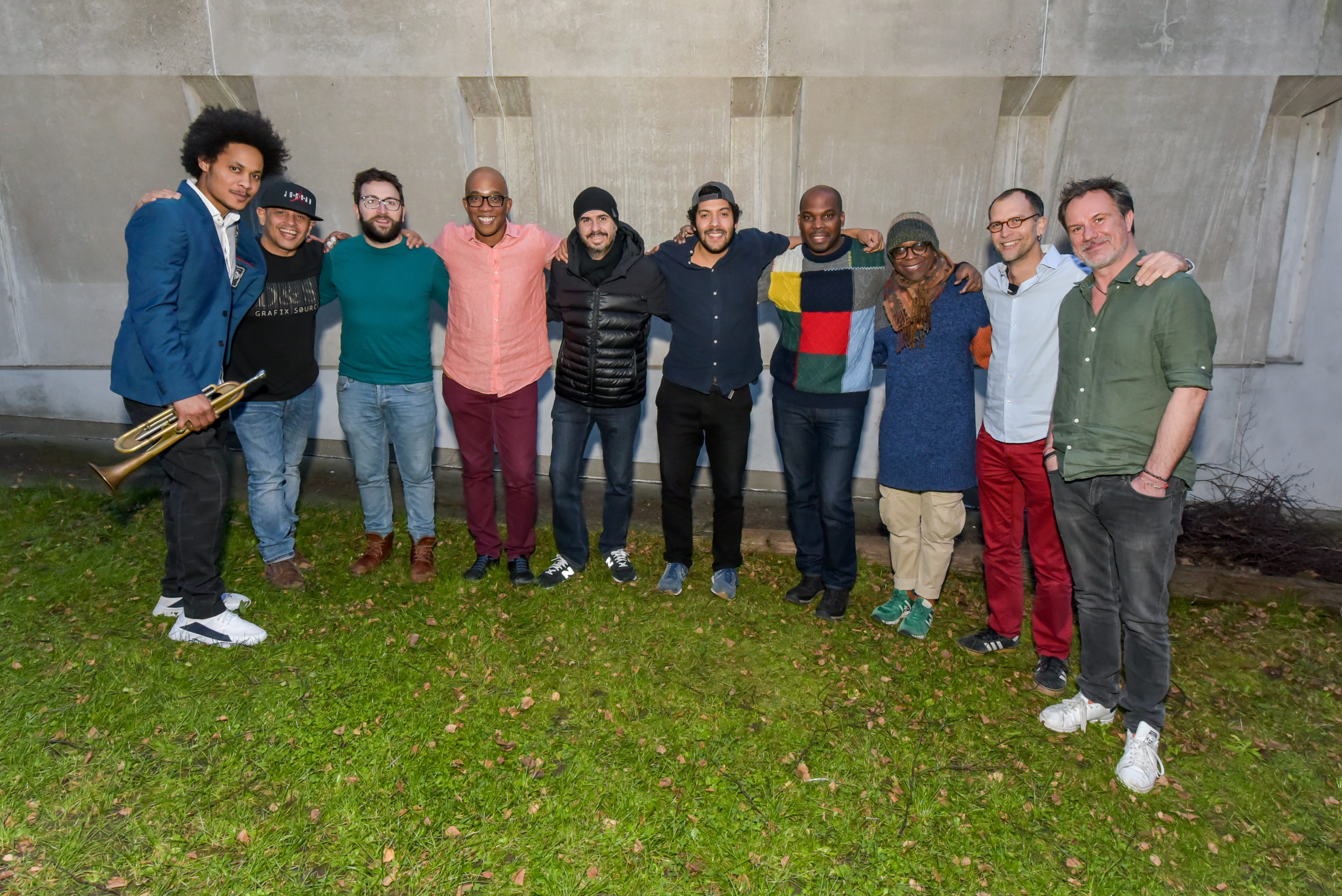
CHUCHO VALDÉS
JAZZ BATÁ
ESPECTÁCULO REALIZADO (2018)
Viernes, 26 de octubre
Palau de la Música Catalana
21h30
Desde 18 € AÑADIR A LA AGENDA
Abono disponible
BEBO VALDÉS A partir del 26 de octubre
Desde que en 2014 Chucho Valdés asumió el cargo de padrino del festival, teníamos claro que cada año nos propondría una nueva aventura. Este 2018, en el año del centenario del nacimiento de su padre, Bebo, Chucho vuelve con una reformulación de uno de los proyectos más especiales de su carrera: el Jazz Batá que grabó en 1972 con Carlos del Puerto y Óscar Valdés, que incluía una canción llamada Irakere. «Esto no es jazz ni es música cubana, esto es jazz loco»…/… Para celebrar nuestra 50 edición, Chucho vuelve al Palau con Jazz Batá, pero ahora en formato cuarteto, con tres de los percusionistas más brillantes del mundo –Yaroldi Abreu, Dreiser Durruthy Bombalé y Abraham Mansfarroll Rodríguez– y el contrabajista Yelsy Heredia, y música que, explica Chucho, será casi toda nueva: «Esto va a ser mejor todavía.» Prepárense, que la aventura continúa.
